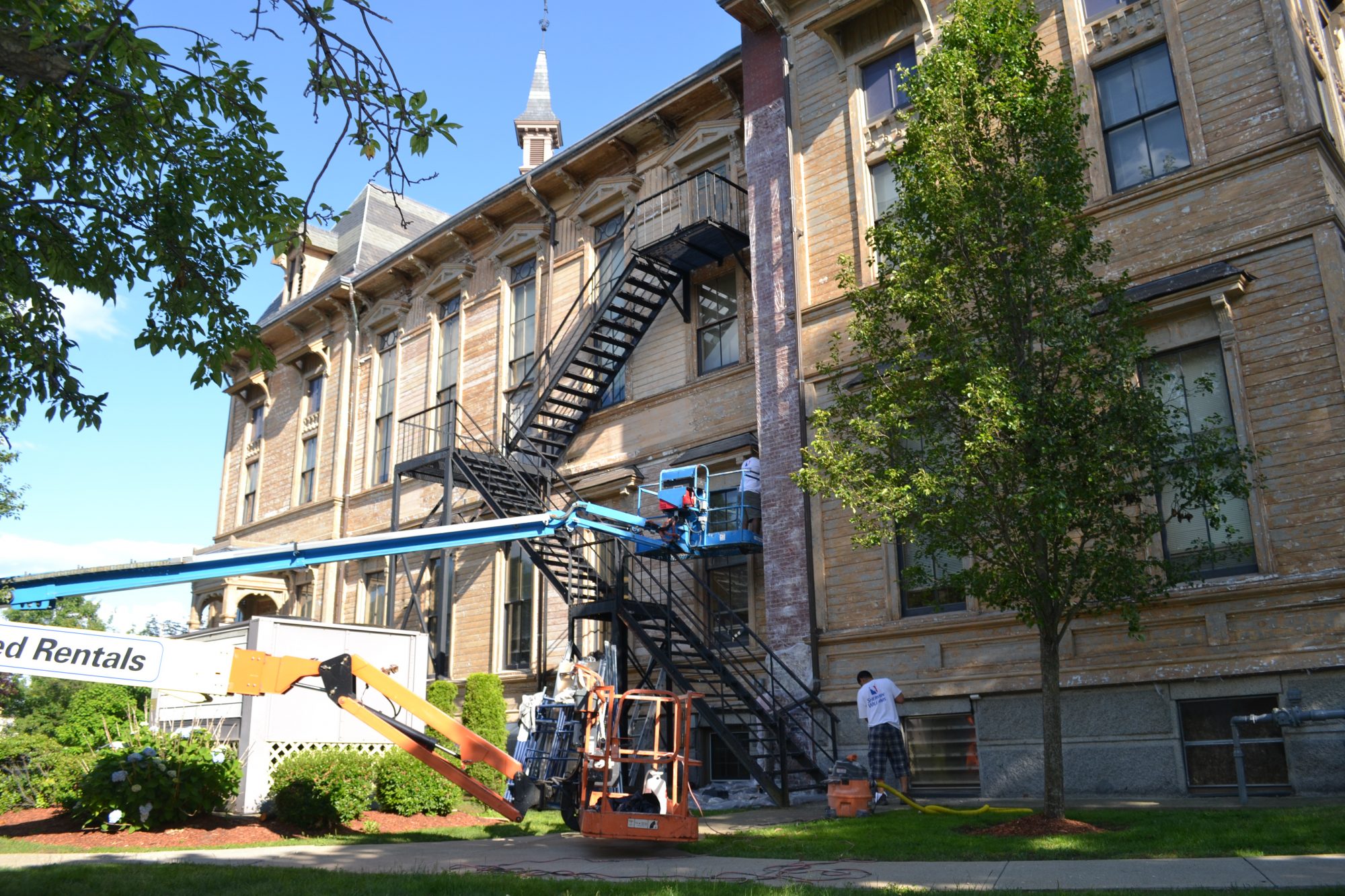SAUGUS — For the first time in two decades, historic Town Hall is undergoing a major restoration project to preserve its exterior.
Town Meeting members voted in April to borrow $400,000 for the project. Now their efforts are coming to fruition.
The building was constructed in 1875 and added to the National Register of Historic Places in 1985. It was designed in the stick style, a late 19th century American transitional architectural style between the carpenter gothic style of the mid-19th century and the Queen Anne style of the 1890s.
At first, the building housed the town’s high school, school committee, police department, and public library.
“There is a great deal of history in this building and this project is long overdue,” said Town Manager Scott Crabtree. “These essential restorations in the heart of the town will put us in a much better position moving forward.”
From now through the fall, lead paint will be removed and the building will be repainted using a three-coat system, rotten and deteriorated wood will be removed and replaced, and any slipped or missing slates will be rehung. The restoration will be completed in phases that begin on the north side of the building and continue in a counterclockwise direction.
A netting will also be added to keep birds from nesting on the exterior of the building. It has been engineered to blend in with the design and should not interfere with the building’s aesthetic, said Crabtree.
In 2016 an appropriation of $200,000 brought in an assessment team to look at the building and its needs. It was discovered that more money was needed to replace rotted wood, strip lead paint, replace boards, and repaint. The roof of the front porch needs work, but most of the slate shingles remain in good shape, said Crabtree.
Building Conservation Associates, Inc., a New York-based restoration firm, Boston-based architect Finegold Alexander Architects, and New Generation Painting are completing the work.
“We are preserving and protecting the building and minimizing ongoing maintenance requirements while maintaining the historical elements of the building,” said Crabtree. “By completing this project, we will help preserve the building for many years to come.”

